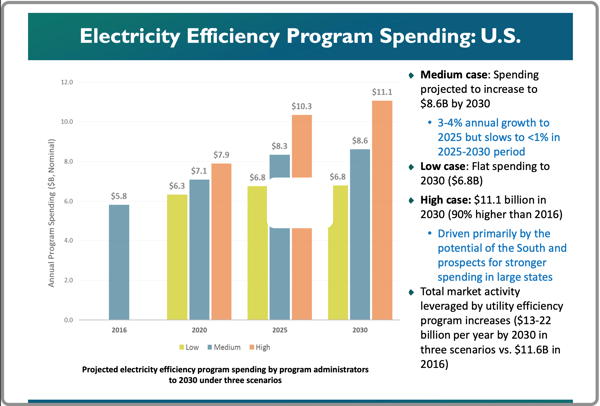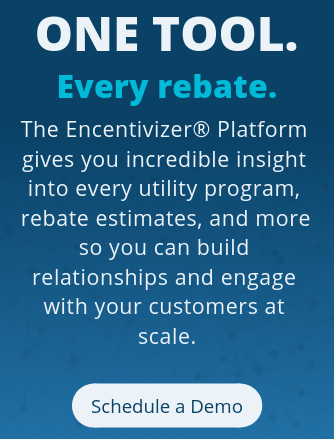This question is one we hear often from customers and others in the industry. Every year we seem to hear rumors that utility incentive programs are going away for various reasons, at this time it seems to be because of increases in building code standards. However, there are too many factors impacting energy efficiency programs to simply say one factor like code changes would cause programs to "go away.”
Over the last 10-15 years efficiency programs have played a significant role in helping to keep the the demand for electricity relatively flat in the U.S. However, with new technology coming on quickly like electric vehicles and electric heat pumps, demand will start to rise again. Energy efficiency programs will need to adapt to reflect these changes and in some regions of the country may need to double or even triple in size over the next ten years (e.g. the NY REV model).
A study conducted by Lawrence Berkeley National Laboratory (LBNL) (this is the third time they did the forecast of the future of U.S. Electricity Efficiency Programs) estimates on a conservative basis that electricity efficiency program spending will increase to $8.6B by 2030, with the South and Midwest making up almost 45% of the spending based on population growth in those areas.
 *The Future of U.S. Electricity Efficiency Programs Funded by Utility Customers: Program Spending and Savings Projections to 2030 Charles A. Goldman, Sean Murphy, Ian Hoffman, Natalie Mims Frick, Greg Leventis and Lisa Schwartz Electricity Markets and Policy Group, Slide 19
*The Future of U.S. Electricity Efficiency Programs Funded by Utility Customers: Program Spending and Savings Projections to 2030 Charles A. Goldman, Sean Murphy, Ian Hoffman, Natalie Mims Frick, Greg Leventis and Lisa Schwartz Electricity Markets and Policy Group, Slide 19
Efficiency programs, just like anything else, are always evolving. New technology gets introduced to the market, take horticultural lighting for example, efficiency programs across the board are making changes to incorporate this lighting technology. These programs are still collecting funds from ratepayers as a dedicated line item on their bill, which will fund efficiency programs for the future.
To learn more on this topic, read through the LBNL study.
See the full article on Green Tech Media.
.png?width=500&name=2019%20e%20news%20spotlight%20logo%20(1).png)




